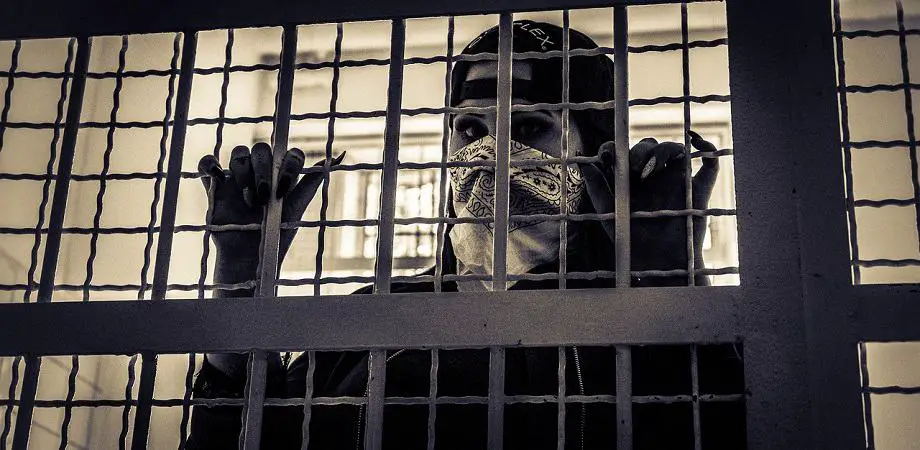Norway consistently ranks among one of the safest European countries. Low overall crime rates and one of the lowest homicide rates in the world are both contributing factors.
While not free of crime, most reported criminal offenses are non-violent and with a prison system that emphasizes rehabilitation before punishment, the rate of repeat offenders is one of the lowest across Europe.
In this article, we will take a look at why Norway is considered a safe country, and highlight some of the statistics to support this as well as different types of crime in Norway.

What is the crime rate in Norway
The crime rate has been low in Norway for decades and has continued to decrease in the last decade.
In 2019, there were 5,820 total crimes per 100,000 inhabitants, down from 8,280 in 2009.
The crime rate per 100 000 of a country is calculated by taking the total number of reported crimes and dividing it by the total population and then multiplying by 100,000.
While this might seem like a lot, it is important to realize that this number also includes minor traffic violations which makes up a sizable portion of total crime.
In terms of violent crimes, Norway is considered one of the safest countries in the world. In 2019, the violent crime rate was 618 per 100,000.
The fact that Norway is a safe country is also supported by its ranking in terms of the crime index.
The crime index is a survey measure that asks respondents from each country to rank their personal feeling of safety out of 100.
In 2022, Norway is ranked 104th globally with a crime rate of 33.85. For comparison, the United States and the UK are ranked 57th and 68th with crime rates of 48.16 and 46.47.
More surprisingly, neighboring Sweden only ranks 55th with a crime index score of 49.
What is the murder rate in Norway?
The murder rate in Norway is exceptionally low. In 2019 there were only 29 people murdered in Norway, which resulted in a murder rate of 0.53 per 100,000 people.
For comparison, other European countries have an average murder rate of about 1 per 100,000 people. While in the United States the murder rate was 6.5 per 100,000 people in 2020.
The main reason for the difference in murder rate between Norway and Europe vs the US is stricter gun control laws.
In Norway and the UK, the most common homicide weapons are knives and sharp objects. In the US, the vast majority of homicides are committed with handguns.
Why is crime so low in Norway
While there are many factors that contribute to Norway’s low crime rates. There are some differences that separate Norway from comparable, developed nations.
One of them is the strict gun control laws, which restrict the purchase and use of all guns, including hunting rifles. In addition, guns must also be carefully locked up when not in use.
Another important factor is the low poverty rate in Norway due to its strong social welfare system.
For example, Norway’s poverty rate in 2019 was 8.4%, whereas the U.S. in the same year had a poverty rate of 17.8% (one of the highest among OECD countries).
Norway also has one of the lowest repeat offenders rates, with only 20% of its prisoners going back to prison within five years.
This is attributed to Norway’s focus on rehabilitation rather than punishment in its prison system and the humane treatment of prisoners.
Inmates are given many resources and help to reintegrate into society, which helps keep repeat offenders to a much lower number than comparable countries, even neighboring Sweden and Denmark.
| Country | Follow up | Recidivism rate (repeat offenders) |
| Norway | 2 years | 20% |
| Sweden | 2 years | 43% |
| Denmark | 2 years | 29% |
| United States | 2 years | 36% |
| United Kingdom | 2 years | 46% |
| Canada | 2 years | 41% |
Norwegians have a high level of trust in Norway’s government and judicial system. It is likely that this translates to low corruption rates which help to keep crime rates low.
Finally, it is believed that the small, homogenous population of Norway, along with a strong sense of community contributes to the low crime rates.
What is the most common crime in Norway?
As with most comparable nations, non-violent crimes are the most common in Norway.
Of a total of around 300 000 crimes being reported in 2020. Theft was the most common, making up 29% of the total.
Traffic violations are the second most commonly reported criminal offense, making up 15% of the total.
In terms of violent crime, assault and battery were the most common, making up around 12% of the total.
Crime rate in Norway vs USA
Based on statistics, Norway is a safer country than the US.
As already pointed out, Norway is ranked 104th worldwide on the crime index, with a score of 33.85, while The United States is ranked 57th with a score of 47.81.
Homicide rates are also far higher in the US compared to Norway. In fact, the overall homicide rate of 6.5 per 100 000 inhabitants is more than 10 times that of Norway at 0.53 per 100,000 people.
In terms of the percentage of the total population being incarcerated, the US does not fare any better.
While it has increased somewhat in Norway in later years, it was still only 0.073% in 2016. In the United States, it was as high as 0.623% as of 2018, or about 8.5 times higher than Norway’s.
Crime rate in Norway vs Sweden
There are many similarities between Sweden and Norway, however, Norway is a slightly safer country than Sweden in terms of crime.
This is in large part due to Sweden’s rank in terms of the crime index being comparable to the United States, ranking 54th in the world with a crime rate of 48.
In terms of the percentage of the incarcerated population, the numbers are similar.
The reasons why Sweden has a higher crime rate have been attributed to less strict gun control laws and a less rehabilitative prison system. Beyond these, it is difficult to say why its crime rate is so much higher.
Crime rate in Norway vs UK
Norway is statistically a safer country than the UK.
The UK ranks 64th on the crime index with a crime rate of 46.07. This puts it right between the US and Norway.
Compared to Norway, The UK has a higher percentage of its population incarcerated. In 2019 0.1379% of its inhabitants were imprisoned. While this is higher than in Norway, it is still much lower than in the US.
A higher poverty rate, slightly less strict gun legislation, and a less rehabilitative prison system are some factors that might explain the UK’s higher crime rates.
Organized crime in Norway
While organized crime is not a major issue threatening the safety of Norwegian citizens, there are several criminal organizations operating in Norway.
This includes certain biker groups which became headline news during the 1990’s Nordic Biker War.
During this period, there was a wave of organized crime infighting over disputed territories between the rivals Hells Angels and Bandidos biker gangs. The conflicts took place across Scandinavia, including Oslo.
The war resulted in 9 gang member deaths and another 74 attempted murders using weapons such as car bombs, shootings, and grenades.
Between 1996-1997, a total of 138 people were sentenced to prison for Biker War-related crimes. The conflict ended in 1997 when the two sides found a peace agreement.
More recently, Oslo has been home to several Pakistani-Norwegian gangs, whose rivalry has resulted in several profiled cases in Norway.
In 2006, tensions broke and led to a gun battle in open daylight between two gangs known as the Young Guns and the B-gang.
The Norwegian police answered by launching Operation Nemesis to curb gang-related crime in Oslo.
The operation managed to curb tensions, as well as uncover several important insights. including how Norway’s value system conflicted with the Pakistani value system regarding their ‘honor culture,’ leading to continuous bouts of crime.
Cybercrime in Norway
While individuals can be subject to common cyberattacks through their use of the internet. Major
Cybercrime is mainly directed at corporations for their money.
A recent example is the ransomware attack directed at industrial conglomerate Norsk Hydro in March 2019.
The attack compromised the company’s internal operations and impacted a vast range of its production capabilities. This was one of the most significant cyberattacks in Norwegian history.
Financial crime in Norway
Financial crime is relatively rare in Norway due to low levels of corruption. However, there are some money laundering and similar white-collar crime cases.
Recently, there has been a hefty fine given to DNB, Norway’s largest bank, for its failure to comply with anti-money laundering laws.
While It was not found guilty of money laundering itself, it was found complicit in not doing enough to detect the money laundering found to be happening.
Sources
Offenses and victims reported to the police – Norwegian bureau of statistics
